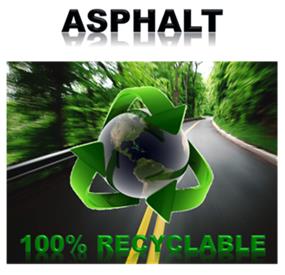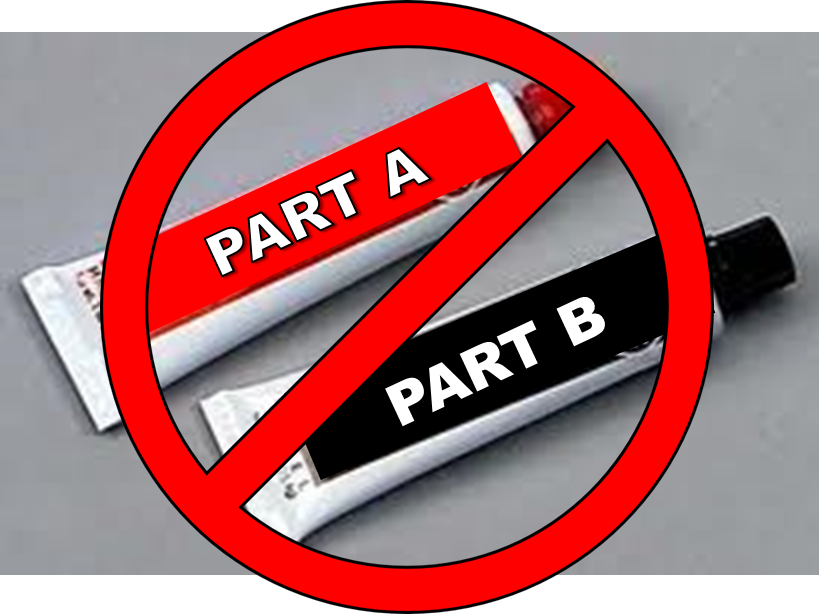For the tenth year in a row Asphalt pavement is the most recycled material in America!
Nearly 100 million tons of Recycled Asphalt Pavement (RAP) is re-used in the U.S. every year. RAP has been used widely for more than 30 years and now makes up about 12% of the volume of the asphalt mixtures produced in the U.S. Asphalt pavements are also the most recycled material in the rest of the world.
Recycled Asphalt Pavement (RAP)
Asphalt pavements are comprised of layers or “lifts” of asphalt concrete, a combination of graded aggregate and sand, typically 94 to 96 percent, bound together by asphalt cement (better known as asphalt binder). Asphalt cement/binder is a most unique material; a solid “glue” or cement at room temperature, it becomes an oil-like lubricant when heated allowing the asphalt paving industry to coat aggregate particles while they are hot, then place and compact into pavement layers before it cools and glues all the particles together.
Recycled Asphalt Pavement (RAP) is the term given to removed and/or processed materials containing asphalt and aggregates. These materials are generated when asphalt pavements are removed for construction, resurfacing, or to obtain access to buried utilities. When properly crushed and screened, RAP consists of high-quality, well-graded aggregates coated by asphalt cement.
Here’s what separates asphalt from all the rest
 Unlike Portland cement which chemically changes when mixes with water (think of two-part epoxy), asphalt cement/binder’s properties change from solid to liquid to solid again as a function of temperature. This is a physical change in properties, no chemical change takes place. Therefore, asphalt pavements and mixes can be removed at the end of their long service lives, reprocessed, heated again and turned back into new asphalt pavement.
Unlike Portland cement which chemically changes when mixes with water (think of two-part epoxy), asphalt cement/binder’s properties change from solid to liquid to solid again as a function of temperature. This is a physical change in properties, no chemical change takes place. Therefore, asphalt pavements and mixes can be removed at the end of their long service lives, reprocessed, heated again and turned back into new asphalt pavement.
100 percent of the aggregate and asphalt binder is recovered and reused as aggregate and asphalt binder!
Using RAP
The HMA industry has been recycling on a large scale since the 1970s when the Oil Embargo resulted in drastic price increases and shortages of gasoline, diesel fuel, asphalt cement/binder and other petroleum products. Research on mix properties and modifications to plant equipment were quickly done in response to the asphalt shortages at that time, and within a few years, recycling became a commonplace practice.
Virginia began asphalt recycling following successful 1979 and 1980 Virginia Department of Transportation research projects incorporating 45-50% RAP in Virginia DOT mixes. Over the past 30+ years, Virginia asphalt producers have developed mix design and processing practices that enable them to meet virgin mix properties and performance with mixes incorporating anywhere from 10 to 50 percent RAP depending on availability and specification requirements.
TOP 10 BENEFITS OF USING RAP
|
For more information on RAP go to Recycling under Pavement Guide